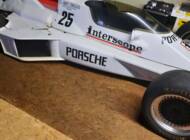1980 | Porsche 940 Interscope
- Statut:
- Aperçu
- Estimation:
- 480 000 € - 550 000 €
- Se termine à :
- 16/02/2025 18:45:00 UTC
Description
In 1978, Porsche struck a deal with Interscope Racing to compete in the 1980 Indianapolis 500, the marquee event of American motorsport.
Interscope Racing, owned by American media mogul Ted Field, was already part of the Porsche fold, having won the 1979 Daytona 24 Hour with a customer Porsche 935. The team’s drivers were Danny Ongais and Hurley Haywood.
Ongais was set to drive the Interscope Porsche for the 1980 IndyCar season.
Field had prior experience in IndyCar, having fielded Cosworth-powered Parnellis for Ongais in the Indianapolis 500. Ongais earned the Rookie of the Year title in 1977, and the following year, he qualified second for the race, leading for 145 laps before engine failure ended his chances.
His performance caught the eye of Jo Hoppen, the competition director for Porsche+Audi Division of Volkswagen of America. Hoppen approached Field with a proposal: to install a Porsche engine in the back of his Parnelli chassis and go racing.
Convincing Porsche, however, was no easy task. Hoppen recalled flying to Germany to meet Dr. Ferry Porsche, who was initially hesitant about the project. To make the case more appealing, Hoppen suggested modifying Porsche’s existing 3.0-liter twin-turbo flat-six engine from its Le Mans program. With minimal changes, he argued, the engine could be adapted for IndyCar, providing a cost-effective way for Porsche to enter America’s biggest single-day sporting event.
Reluctantly, Dr. Porsche agreed, and the project was greenlit. Engineers set to work, reducing the engine’s displacement from 3.0 to 2.65 liters to meet IndyCar regulations. They also removed one of the KKK turbochargers, as rules permitted only a single turbo. The modified engine produced around 470 kW at 9000 rpm and 559 Nm at 6400 rpm, with a four-speed manual gearbox driving the rear wheels.
However, Porsche’s timing was unfortunate. U.S. open-wheel racing was in turmoil, caught in a power struggle between the United States Auto Club (USAC) and the newly-formed Championship Auto Racing Teams (CART). While politics played out, Porsche focused on testing. In autumn 1979, the Interscope Porsche hit the track with Ongais behind the wheel. Early tests were troubled, with several engines failing due to oil starvation in the number one cylinder.
Meanwhile, USAC was setting new regulations for turbocharged engines. Cosworth’s V8s were permitted 1.6 bar of boost, the four-cylinder Offenhauser engines 2.0 bar, and Porsche’s flat-six was initially allotted 1.8 bar. This decision angered competitors like A.J. Foyt, who lobbied for simplified boost limits: 2.0 bar for all four-cylinder engines and 1.6 bar for engines with more cylinders.
Despite the controversy, Porsche continued testing. During a qualifying simulation at Ontario Motor Speedway—identical in layout to Indianapolis—the Interscope Porsche posted a four-lap average of 307 km/h. Foyt, concerned about the Porsche’s pace, threatened to leave USAC for CART if the rules were not adjusted.
USAC found itself in a bind: support Porsche’s entry or risk losing an American racing icon like Foyt. Ultimately, the governing body caved, revising the turbo boost rules a month before the 1980 Indianapolis 500. Porsche’s engine was now restricted to 1.6 bar, down from 1.8.
Feeling betrayed after investing time and money into an engine designed to run at 1.8 bar, Porsche had little choice but to withdraw from the program.
A month later, Johnny Rutherford, driving a Cosworth-powered car, secured pole with a four-lap average of 309.406 km/h. Foyt, the fastest Offenhauser driver, qualified 12th with a 298.533 km/h average. Given Porsche’s 307 km/h test run, it’s plausible that Ongais could have been a serious contender had the program continued.
Rutherford went on to win the race—his third and final Indianapolis 500 victory—while Ongais, now driving a Cosworth-powered Parnelli for Interscope, finished seventh.
Porsche’s IndyCar program had been well-developed. The Interscope entry was even designated a 900-series type code—Typ 940—following Porsche tradition. The company had also printed promotional materials announcing its Indy 500 debut. While those materials are now collectible memorabilia, the engine itself found a new purpose. The modified flat-six powered Porsche’s 956 and later 962 endurance racers, leading to six consecutive Le Mans victories from 1982 to 1987.
Porsche made a brief return to American open-wheel racing in 1987, entering the Quaker State Porsche in two races. It struggled for competitiveness, and by the following year, Porsche Cars North America abandoned the proprietary chassis in favor of a Porsche-powered March for Teo Fabi. The 1988 season yielded some highlights, including a fourth-place finish in Pennsylvania and a 10th-place overall standing.
In 1989, Fabi secured two pole positions, one race victory, and Porsche’s best-ever oval finish—a second-place at Michigan International Speedway. He ended the year fourth in the championship, encouraging Porsche to invest in a new carbon-fiber chassis for 1990. However, CART promptly banned the design, forcing the team to continue with its older March chassis. Fabi finished 14th in the standings, and Porsche withdrew from U.S. open-wheel racing once again.
Porsche has not returned since.
Détails du véhicule
Données du véhicule
- Marque
- Porsche
- Série de modèles
- 940
- Modèle
- 940 Interscope
- Date immatriculation
- Non fourni
- Année
- 1980
- Kilométrage (compteur)
- Numéro d'identification du véhicule
- Non fourni
- Numéro de moteur
- Non fourni
- Numéro de Transmission
- Non fourni
- Numéros correspondants
- Non fourni
- Nombre de propriétaires
- Non fourni
Détails techniques
- Type de carrosserie
- Voiture de course
- Puissance (kW/CV)
- 478/650
- Cylindrée (cm³)
- 2650
- Cylindres
- 6
- Portes
- Non fourni
- Volant
- Centré
- Boîte de vitesse
- Boîte manuelle
- Vitesses
- 4
- Traction
- Arrière
- Frein avant
- À disque
- Frein arrière
- À disque
- Carburant
- Essence
Configuration individuelle
- Couleur extérieure
- Blanc
- Couleur intérieure
- Noir
- Matériel intérieur
- Autres
État, immatriculation, documentation
- Expertise disponible
- Non fourni
- Immatriculé
- Prêt à conduire
Avez-vous des questions concernant cette vente aux enchères ?
Vous souhaitez vendre un véhicule aux enchères ? N'hésitez pas à nous contacter.
Offres et commentaires
Rédiger un commentaire
Pas encore d'offres et de commentaires!
Galerie d'images
- Ouvrir l'image dans un nouvel onglet
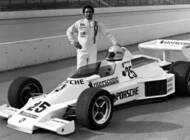
- Ouvrir l'image dans un nouvel onglet
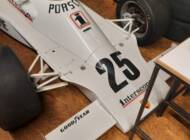
- Ouvrir l'image dans un nouvel onglet
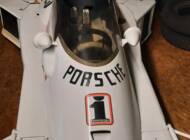
- Ouvrir l'image dans un nouvel onglet
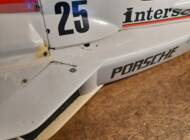
- Ouvrir l'image dans un nouvel onglet
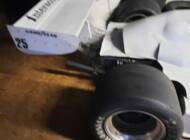
- Ouvrir l'image dans un nouvel onglet
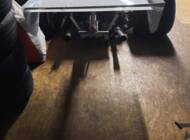
- Ouvrir l'image dans un nouvel onglet
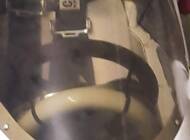
- Ouvrir l'image dans un nouvel onglet
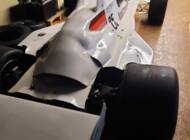
- Ouvrir l'image dans un nouvel onglet
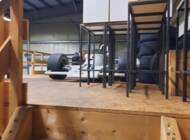
- Ouvrir l'image dans un nouvel onglet
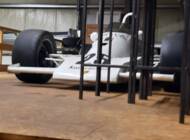
- Ouvrir l'image dans un nouvel onglet
